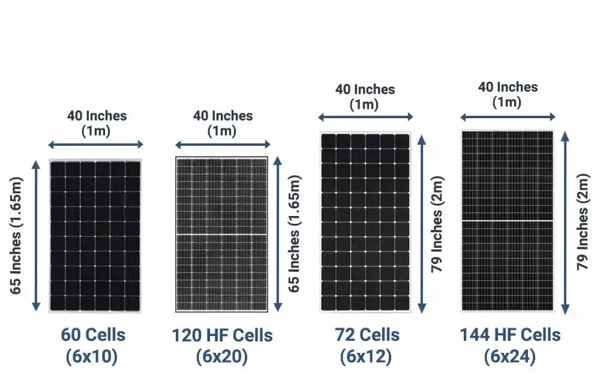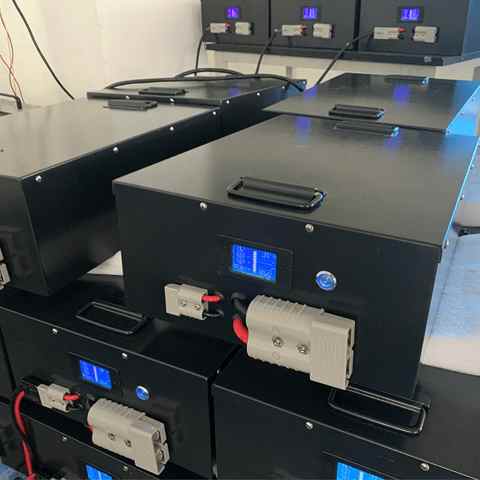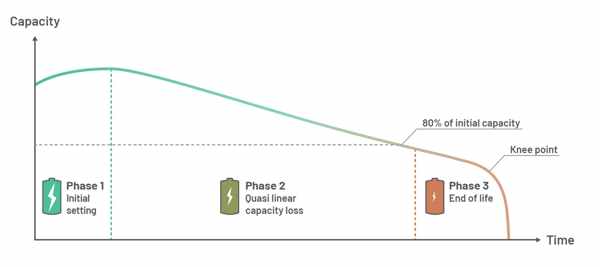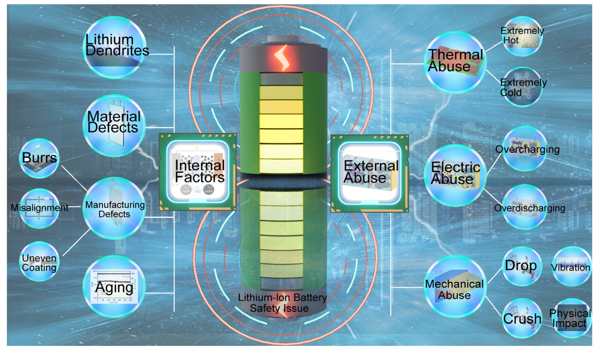Combien de temps 48 Batterie Volt Dernière?
Lorsque vous planifiez un système de stockage d’énergie pour votre maison, Surtout pour la puissance solaire ou de sauvegarde, la plateforme 48 volts est une norme populaire et efficace. Une question clé qui se pose naturellement est, "Combien de temps durera réellement une batterie de 48 V ??" La réponse ne réside pas uniquement dans la tension; cela dépend de la capacité de la batterie et de la façon dont vous l’utilisez.
L’autonomie d’une batterie 48 V dépend entièrement de son ampère-heure (Ah) ou kilowattheure (kWh) capacité nominale et consommation électrique (en watts) des appareils que vous utilisez. Une batterie de plus grande capacité, comme une unité 48V 200Ah, durera deux fois plus longtemps qu'une unité 48 V 100 Ah sous la même charge. Les systèmes de batterie muraux modernes de 48 V facilitent le choix de la capacité adaptée à vos besoins..

À Gycx Solaire, nous sommes spécialisés dans la conception de systèmes énergétiques 48 V qui fournissent des, puissance longue durée. Voyons comment calculer l'autonomie et répondons à d'autres questions critiques sur ces puissantes batteries..
De combien de panneaux solaires ai-je besoin pour charger une batterie 48V 100Ah?
Associer votre batterie 48V 100Ah à des panneaux solaires est la clé d'une véritable indépendance énergétique. Mais comment dimensionner votre panneau solaire pour garantir que votre batterie soit complètement chargée chaque jour ??
Pour charger de manière fiable un 48En 100h (qui est 4.8 kWh) batterie une journée typique, vous auriez généralement besoin d'un réseau de panneaux solaires d'environ 1.5 kw à 2.5 kW. Cela se traduit par environ 4 à 6 moderne, Panneaux solaires à haute efficacité 400W. Le nombre exact dépend de votre emplacement spécifique, la période de l'année, et les conditions météorologiques locales.

Plonger plus profondément: Différents climats régionaux
Voici comment nous déterminons la bonne taille de panneau solaire:
- Énergie pour reconstituer: Un LFP 48V 100Ah (Phosphate de fer au lithium) magasins de batteries à propos 4.8 kwh d'énergie. Pour le recharger complètement quotidiennement, vous devez générer ce montant plus un petit supplément pour couvrir les pertes du système.
- Hautes du soleil de pointe (Psh): C'est un facteur crucial qui varie selon la saison. Au Japon, tu pourrais t'en remettre 4.5 PSH en été mais seulement 2.5-3 PSH par temps clair en hiver. Nous concevons des systèmes basés sur une moyenne prudente sur toute l’année (Par exemple, 3.5 - 4 Psh) pour garantir une recharge fiable pendant la majeure partie de l’année.
- Pertes de système: Nous tenons compte de l'énergie perdue en raison de la chaleur du panneau, câblage, et l'efficacité du contrôleur de charge MPPT (typiquement 15-25% perte totale).
- Le calcul:
- Énergie solaire requise (kW) = Énergie nécessaire (kWh) / (PEAK SUN HEURES X FACTEUR D'EFFICICATION)
- Exemple:
4.8 kWh / (3.5 hours x 0.80 efficiency) = 1.7 kW (1700 Watts) - Cela signifierait
1700W / 400W per panel ≈ 4 to 5 panels. Nous recommandons souvent un panneau supplémentaire pour fournir un tampon pour les jours nuageux.
Cette attention, le dimensionnement spécifique à l'emplacement garantit que votre batterie est prête à vous alimenter toute la nuit ou pendant la prochaine saison des typhons.
Quelle est l'autonomie d'une batterie lithium 100 Ah 48 V?
Soyons précis. Vous disposez d'une batterie lithium 100Ah 48V. Combien d'heures d'alimentation de secours pouvez-vous réellement en attendre en cas de panne de courant?
UN 100Batterie lithium Ah 48V fournit un total de 4,800 wattheures (Wh) ou 4.8 kilowattheures (kWh) de stockage d'énergie. Le temps de sauvegarde est cette énergie totale divisée par la consommation électrique de vos appareils. Par exemple, il pourrait exécuter un 480-watt charger pendant environ 10 heures ou un briquet 200-watt se charger 24 heures.

Plonger plus profondément: Calcul de la durée d'exécution de votre sauvegarde
Voici le calcul simple:
Temps d'exécution (Heures) = Énergie totale (Wh) / Votre charge (Watts)
Examinons quelques scénarios pratiques pour une maison:
- Scénario 1: Charges essentielles (environ. 300O): Lors d'une panne, vous utilisez votre réfrigérateur efficace, plusieurs lumières LED, votre routeur Internet pour les mises à jour, et charger vos téléphones.
4,800 Wh / 300 W = 16 hours
- Scénario 2: Charges modérées (environ. 800O): Vous ajoutez une télévision et un cuiseur à riz à l'essentiel.
4,800 Wh / 800 W = 6 hours
C'est pourquoi moderne 48v batterie murale les systèmes sont si populaires. Un seul module de 4,8 kWh fournit une excellente sauvegarde pour l'essentiel. Et parce qu'ils sont modulaires, vous pouvez facilement ajouter une deuxième unité pour doubler votre temps de sauvegarde pour une plus grande tranquillité d'esprit. À Gycx Solar, nous vous aidons à effectuer une analyse de charge pour vous assurer d'obtenir le temps de sauvegarde que vous attendez.
Les batteries au lithium se détériorent-elles en restant assises?
Que faire si vous disposez d'un système de batterie mais que vous ne l'utilisez pas pendant un certain temps ?? Une batterie au lithium peut-elle se détériorer simplement après avoir été stockée, inutilisé?
Toutes les piles, y compris le lithium-ion, se dégradera lentement avec le temps, même lorsqu'il n'est pas utilisé. Ceci s'appelle vieillissement du calendrier. Cependant, LFP moderne (Phosphate de fer au lithium) les batteries sont exceptionnellement stables. Ils ont également un très faible taux d'auto-décharge (1-3% par mois), ce qui signifie qu'ils perdent très peu de charge en position assise. La clé pour garantir une longue durée de vie en stockage est de les conserver dans un endroit frais à un état d'accusation partiel (autour 40-60%).

Plonger plus profondément: Vieillissement du calendrier vs. Auto-décharge
Il est important de connaître les deux façons dont une batterie vieillit lorsqu’elle est inactive:
- Auto-décharge: C'est la perte de charge temporaire et lente. Vous pouvez simplement recharger la batterie pour la restaurer. Le faible taux de charge des batteries LFP signifie que vous pouvez les stocker pendant plus d'un an et qu'elles conserveront toujours une charge importante.
- Vieillissement du calendrier: C'est le permanent, perte irréversible de capacité qui se produit au fil des années, Quelle que soit l'utilisation. La vitesse de ce processus est fortement influencée par deux facteurs:
- Température: La chaleur est le plus grand ennemi. Une batterie stockée dans un environnement chaud vieillira beaucoup plus rapidement qu'une batterie stockée dans un environnement frais., espace climatisé.
- État d'accusation: Pour un stockage à long terme, garder une batterie au lithium à 100% le plein met du stress sur ses cellules et accélère le vieillissement. Le stocker à 0% est aussi dangereux. UN 40-60% la charge est l’état idéal à faible stress pour le stockage.
Une batterie LFP correctement stockée peut rester très longtemps et rester saine et prête à l'emploi.
Une batterie au lithium peut-elle prendre feu lorsqu'elle n'est pas en charge?
La sécurité de la batterie est la considération la plus importante. On entend souvent parler d'incendies liés à la recharge, mais peut être de haute qualité batterie au lithium1, comme celui d'un système de stockage domestique, prendre feu alors qu'il est juste là, ne charge pas ou ne décharge pas?
C'est rarissime pour une haute qualité, batterie au lithium intacte qui prend feu spontanément lorsqu'elle n'est pas utilisée. Un tel événement nécessiterait presque certainement un court-circuit interne, qui est généralement causée soit par un défaut de fabrication ou dommages physiques antérieurs à la batterie. C'est pourquoi choisir des batteries de fabricants réputés avec un contrôle de qualité rigoureux et une chimie sûre comme LFP est tellement critique.

Plonger plus profondément: Comprendre et atténuer le risque
Voici un aperçu de ce sujet clé en matière de sécurité:
- La Cause (Court-circuit interne): À l’intérieur d’une cellule de batterie se trouvent des couches ultra-minces de matériaux positifs et négatifs séparées par un séparateur. Un incendie peut se déclarer si ces couches se touchent. Cela peut être dû à un défaut de fabrication microscopique ou à une chute de la batterie., bosselé, ou perforé, causant des dommages internes.
- Le rôle du contrôle qualité: Les fabricants de batteries réputés investissent massivement dans la fabrication en salle blanche et les tests en plusieurs étapes (y compris les rayons X et les tests de vieillissement) pour détecter et filtrer les cellules présentant des défauts potentiels. C'est la première et la plus importante ligne de défense.
- L’avantage sécurité du LFP: C'est crucial. LFP (Phosphate de fer au lithium) la chimie est intrinsèquement beaucoup plus stable chimiquement et thermiquement que les autres types de lithium-ion (comme NMC ou LCO trouvés dans les téléphones et les ordinateurs portables). Même si une cellule LFP tombait en panne, il est beaucoup plus probable qu'il dégage de la fumée et tombe en panne en toute sécurité plutôt que de se transformer en un violent incendie.
- L'importance d'un système de protection: Un professionnel 48v batterie murale ce n'est pas qu'une batterie; c'est un BESS. Le robuste, le boîtier de protection est conçu pour éviter les dommages physiques qui pourraient conduire à un court-circuit interne. Le BMS interne fournit également une couche de surveillance constante.
La sécurité de nos clients est notre priorité absolue. C'est pourquoi nous utilisons exclusivement des batteries LFP provenant de fabricants de classe mondiale.. Nous savons que leur contrôle de qualité rigoureux et la sécurité inhérente de la chimie LFP offrent le plus haut niveau de protection et de tranquillité d'esprit pour un système installé dans votre maison..
Une batterie 48 V est l’épine dorsale d’un système de stockage d’énergie puissant et efficace. Comprendre combien de temps il durera est un simple calcul basé sur sa capacité (Ah) et ta charge (O). Moderne 48v batterie murale systèmes, construit avec la technologie LFP sûre et durable, offrir un service fiable, nécessitant peu d'entretien, et une solution à long terme pour l'indépendance énergétique et l'alimentation de secours.
Si vous avez des questions sur la conception d'un système de batterie 48 V, dimensionner un panneau solaire, ou souhaitez explorer les solutions de batteries les plus sûres et les plus fiables pour votre maison, Notre équipe d'experts de GYCX Solar est là pour aider. Contactez-nous pour une consultation professionnelle! Gycxsolar accueille votre consultation, nos experts vous donneront une solution rapide et satisfaisante.
Explorer les risques liés aux batteries au lithium peut vous aider à prendre des décisions éclairées concernant leur utilisation et leur stockage. ↩
